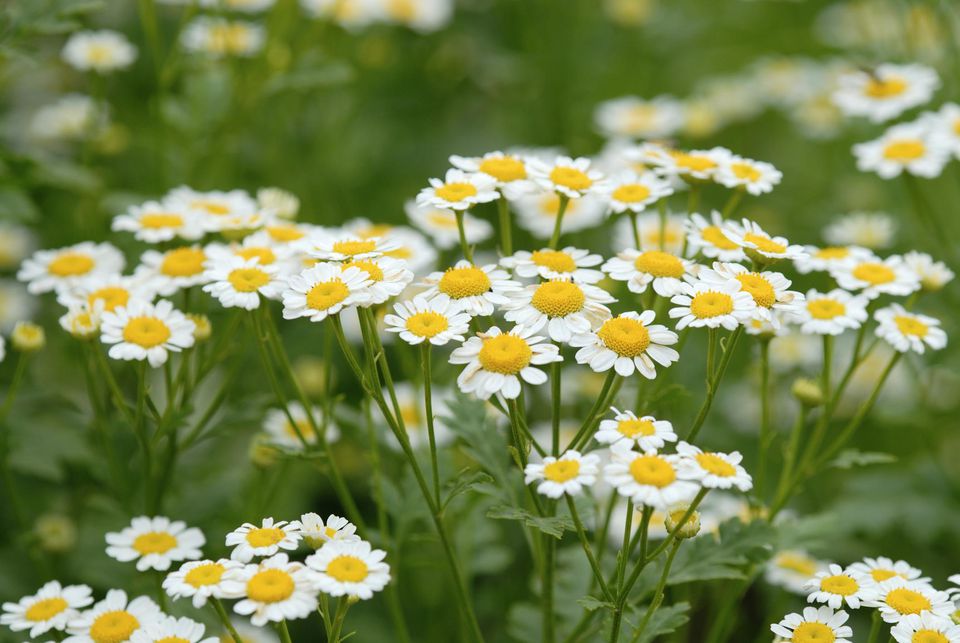Chamomile is a popular herb known for its calming and medicinal properties. There are several species of chamomile, including German chamomile, Roman chamomile, and wild chamomile. To harvest or grow your own chamomile, it’s important to know how to identify the leaves of this versatile plant.
In this article, we’ll cover the key features of chamomile leaves so you can recognize this beneficial herb. We’ll also provide tips on distinguishing chamomile foliage from lookalike plants
Overview of Chamomile Leaves
There are two main species of chamomile used for tea and medicine – German chamomile (Matricaria recutita) and Roman chamomile (Chamaemelum nobile), They have slight differences in their leaves
German Chamomile Leaves
- Fine, feathery appearance
- Fern-like and wispy
- Bright light green color
- Alternate leaf arrangement on stems
- Highly divided and branched leaves
- Delicate texture
Roman Chamomile Leaves
- Finely divided like parsly
- Flatter and thicker than German chamomile
- Shorter than German chamomile leaves
- Darker green color
- Alternate arrangement on stems
- Sparse on stems compared to flowers
Both types give off a strong chamomile scent when crushed. The fragrant oils are contained in glandular hairs on leaves and stems.
Details on the Appearance of Chamomile Leaves
Let’s look more closely at some of the details that make up the overall appearance of chamomile foliage
-
Leaf shape – The leaves are twice pinnate, meaning they are very finely divided into segmented and toothed leaflets, creating a fern-like look.
-
Leaf margins – The tiny leaflets have pointed tips and smooth edges without serrations or teeth.
-
Leaf arrangement – Leaves emerge singly in an alternating pattern along the upright stems.
-
Leaf texture – Chamomile leaves have a delicate, wispy appearance and are soft to the touch.
-
Leaf color – Most chamomile varieties have light green leaves, but some may take on a yellowish hue.
-
Leaf stems – The individual leaflets connect to a central rachis or stalk.
-
Leaf size – German chamomile leaves reach about 2-3 inches long. Roman chamomile foliage is slightly smaller at 1-2 inches in length.
How to Positively Identify Chamomile Leaves
Here are some tips for feeling confident you have correctly identified chamomile from its foliage:
-
Crush a leaf and smell it. Chamomile leaves have a characteristic strong, apple-like fragrance.
-
Examine the finely divided, ferny leaf shape with segmented leaflets. This is a signature chamomile feature.
-
Look for small, white, daisy-like flowers on the stems to confirm it is chamomile. The foliage alone can resemble other plants.
-
Both German and Roman chamomile have alternately arranged leaves sprouting singularly up their slender stems and branches.
-
If you find a suspected chamomile plant with flat, solid green leaves rather than delicate, feathery ones, it is likely a lookalike plant and not true chamomile.
How to Distinguish Chamomile Leaves from Lookalikes
Some other herbs and plants can closely resemble chamomile at first or casual glance. Here’s how to tell them apart:
-
Yarrow – Leaves are more evenly distributed on stems rather than alternate. Foliage is strongly scented. Flowers are clustered, not single.
-
Wild carrot – Lacy leaves like chamomile, but solid not divided into leaflets. Has a taproot. White umbel flowers.
-
Parsley – Leaflets are shiny. No flowers. Strong parsley scent. Generally low growing.
-
Fennel – Thicker leaves and bulb base. Anise-licorice scent. Yellow umbel flowers on tall stalks.
-
Dill – Feathery but larger and not as finely divided. Distinct dill odor. Umbel flowers.
-
Sweet cicely – Fern-like leaves. Maple-anise scent. White flowers. Perennial plant.
Ideal Growing Conditions for Chamomile
Once you’ve identified chamomile in the wild or garden, you can provide ideal conditions if you want to encourage growth and harvest the leaves and flowers:
-
Full sun location
-
Sandy, well-draining soil
-
Moderate moisture – drought tolerant but avoid soggy soil
-
Cool temperatures – tolerates frost
-
Space plants 6-12 inches apart
-
Harvest leaves frequently to encourage new growth
-
German chamomile often reseeds itself readily
Get Familiar with This Soothing Herb
Chamomile is easily recognized once you become familiar with its delicate, fern-like green leaves that emit a sweet apple fragrance when crushed. A few simple observations such as the highly divided foliage, solitary flowers, and distinct aroma will help you confidently identify both German and Roman chamomile leaves. With this knowledge, you can harvest chamomile to enjoy its many benefits.
Winter Survival Food Handbook
Learn how to survive on
What you DIDN’T know about Chamomile! Growing | Harvesting | Uses
FAQ
How do you identify chamomile leaves?
What can be mistaken for chamomile?
How do you identify false chamomile?
Are chamomile leaves good for anything?
- A Complete Guide to Caring for Yuki Cherry Blossom Shrub - January 23, 2025
- Identifying Red Hot Poker Seeds: What to Look For When Harvesting Torch Lily Pods - January 23, 2025
- A Complete Guide to Harvesting Evening Primrose Seeds - January 23, 2025

